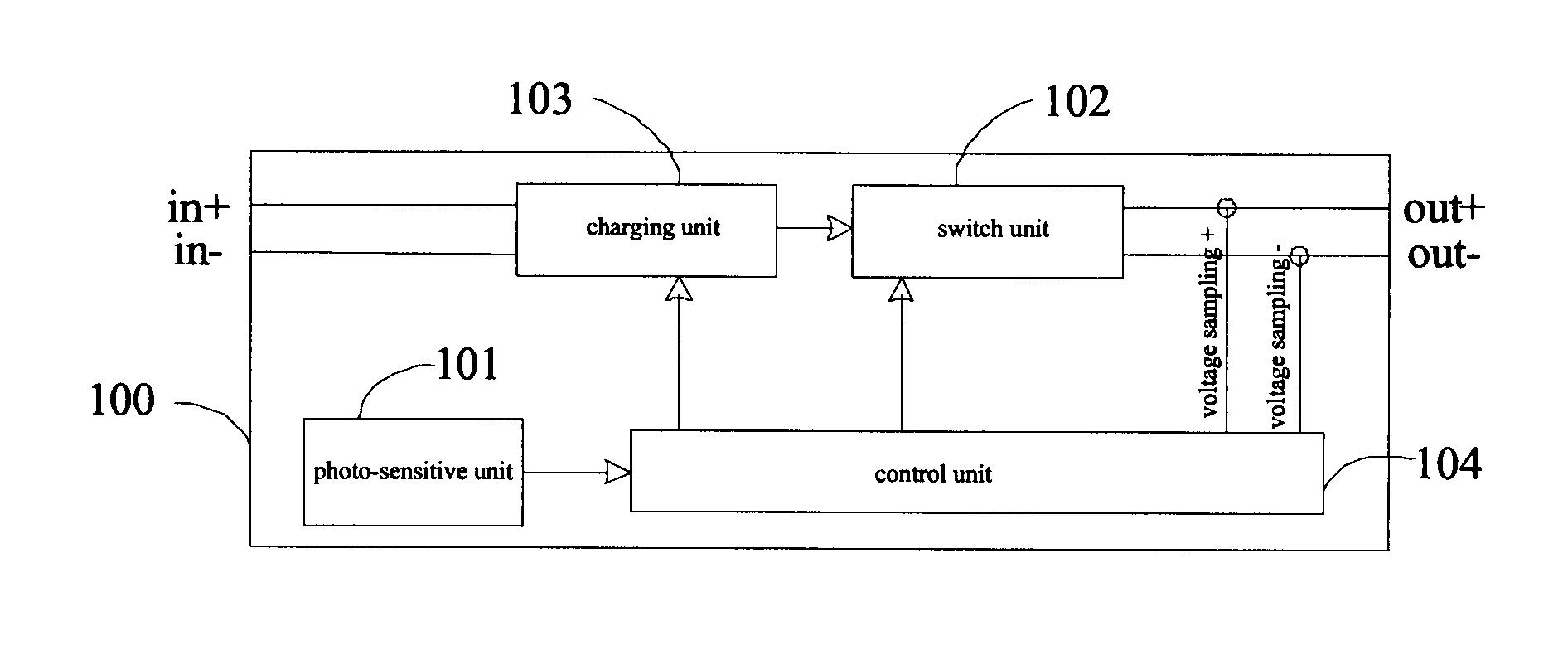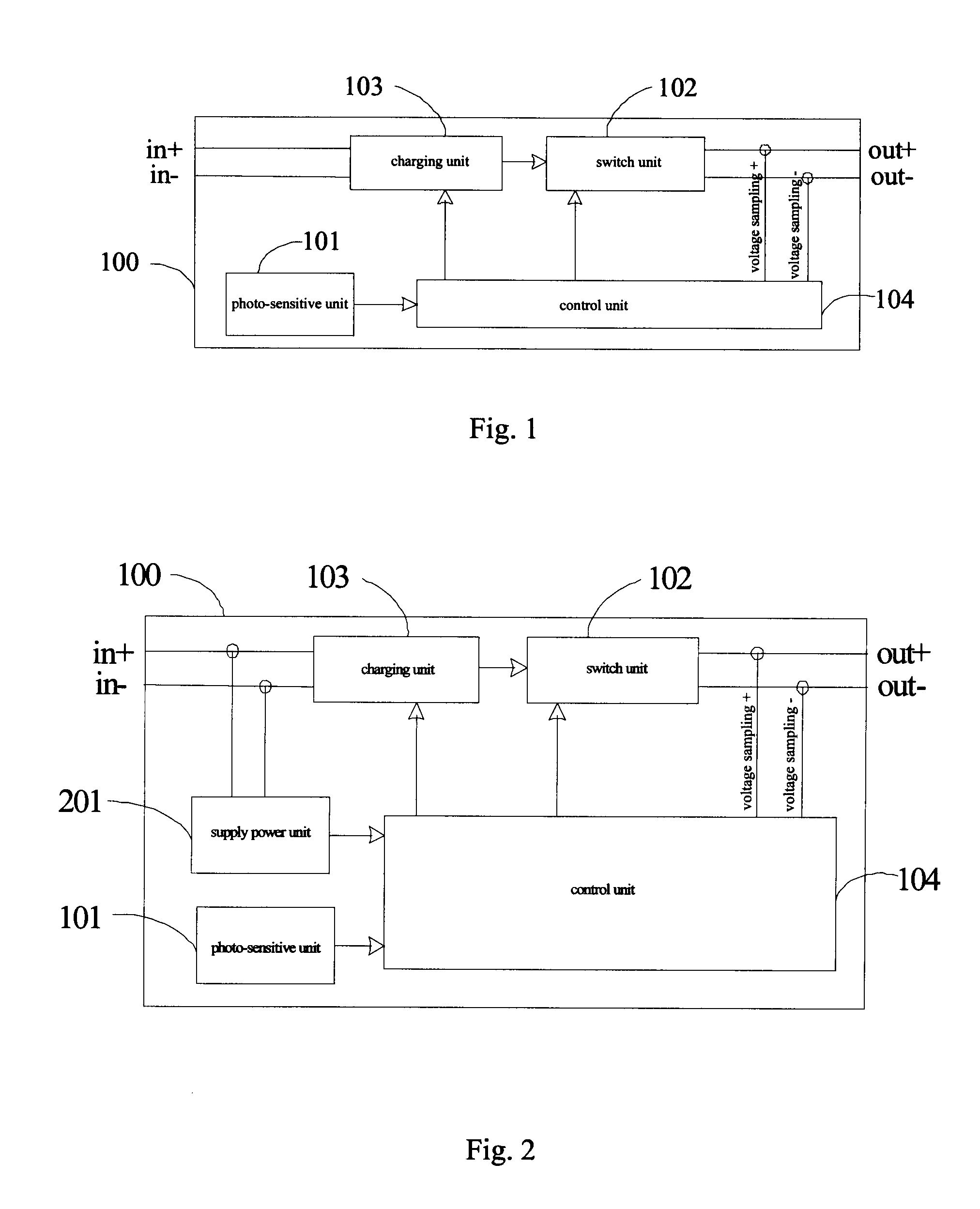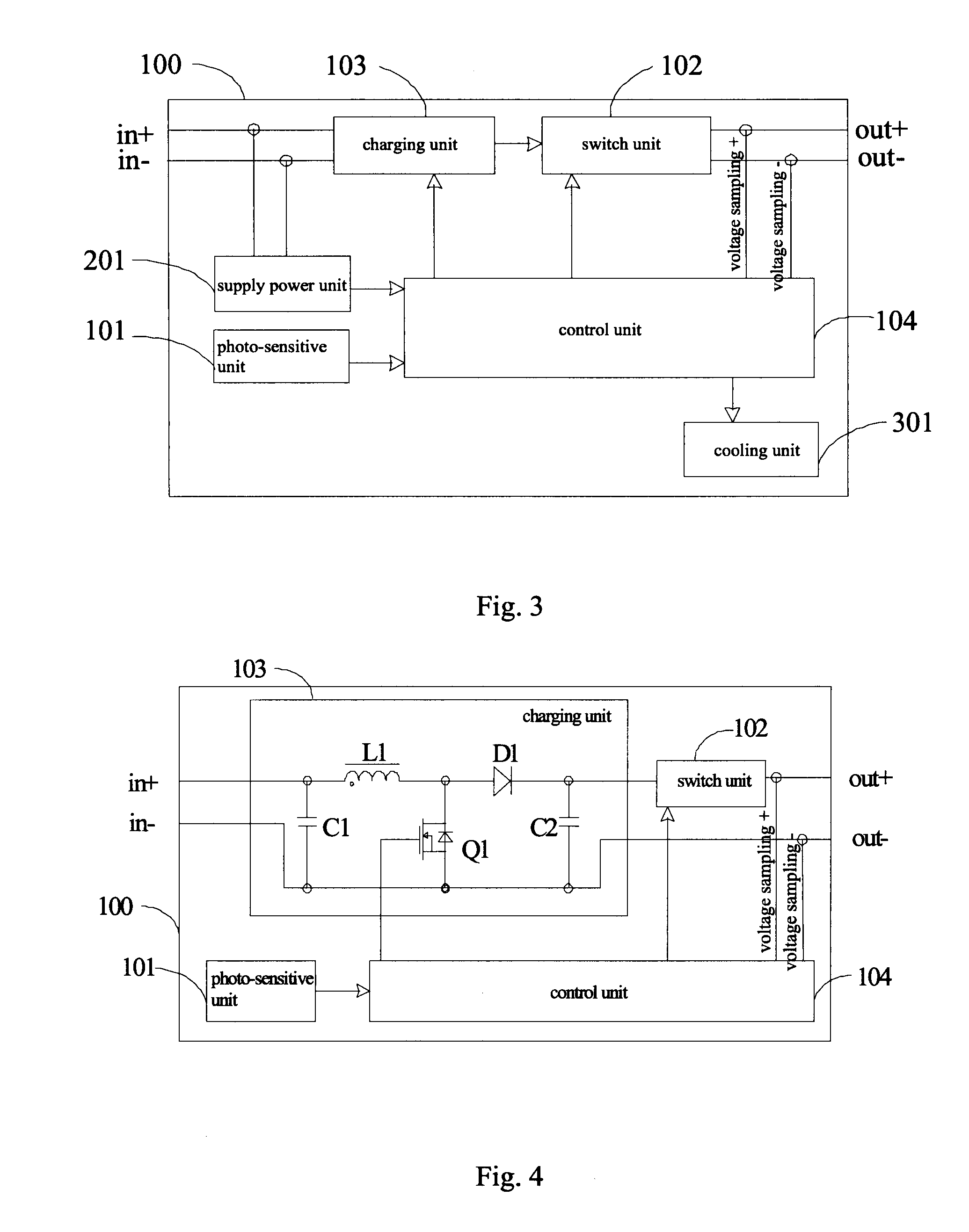Solar charger for charging power battery
a technology for solar cells and power batteries, applied in the field of solar chargers, can solve the problems of limiting the range and area of electric buses, devices and machines that require high power, etc., and achieve the effect of boosting the voltage for charging the power battery
- Summary
- Abstract
- Description
- Claims
- Application Information
AI Technical Summary
Benefits of technology
Problems solved by technology
Method used
Image
Examples
first embodiment
[0019]As shown in a first embodiment in FIG. 1, the solar charger 100 comprises: a photo-sensitive unit 101, a switch unit 102, a charging unit 103, and a control unit 104. The control unit 104 is coupled to each of the photo-sensitive unit 101, the switch unit 102, and the charging unit 103.
[0020]The photo-sensitive unit 101 is configured to detect the light intensity and to send the light intensity to the control unit 104. For example, the photo-sensitive unit 101 may include a photo-sensitive resistor or other photo-sensitive components.
[0021]The switch unit 102 is coupled between the charging unit 103 and the power battery and configured to disconnect the charging unit 103 from the power battery or connect the charging unit 103 with the power battery under the control of the control unit 104. For example, the switch unit 102 may be a relay. When the solar charger 100 satisfies the charging conditions, the control unit 104 may switch on the relay to allow the charging unit 103 to...
second embodiment
[0026]In a second embodiment shown in FIG. 2, the solar charger 100 further comprises a power battery unit 201 coupled to the control unit 104, and configured to receive and stabilize the voltage that has been transformed from the solar energy and input into the charging unit 103 to power the control unit 104; and when the voltage transformed from the solar energy reaches a second predetermined value, the control unit 104 starts to operate. Thus, when the voltage input into the charging unit 103 is lower than the second predetermined value, the control unit 104 may not operate, which prevents the solar charger 100 from operating. When the voltage input into the charging unit 103 reaches or is higher than the second predetermined value, the solar charger 100 can then start to operate. In some embodiments, the second predetermined value may be no less than 12 V, and an exemplary value may be 80 V. The second predetermined value can have different values depending on the actual operati...
third embodiment
[0030]In the present disclosure, as shown in FIG. 3, the solar charger 100 may further comprise a cooling unit 301 coupled to the control unit 104. The cooling unit 301 is configured to cool the solar charger 100 when a temperature of the solar charger 100 detected by the control unit 104 reaches a third predetermined value, thus ensuring reliable operation of the solar charger 100. The third predetermined value may range from about 40° C. to about 100° C., and an exemplary value may be 85° C. The temperature of the solar charger 100 can be detected by a temperature sensor, and because the charging unit 103 is the main energy transforming component, the temperature near the charging unit 103 should preferably be detected.
[0031]As shown in FIGS. 1 to 3, the switch unit 102 is coupled to the positive and negative output terminals of the solar charger 100. It is noted that in practice, the switch unit 102 can be coupled to one of the positive or negative output terminals of the solar c...
PUM
 Login to View More
Login to View More Abstract
Description
Claims
Application Information
 Login to View More
Login to View More - R&D
- Intellectual Property
- Life Sciences
- Materials
- Tech Scout
- Unparalleled Data Quality
- Higher Quality Content
- 60% Fewer Hallucinations
Browse by: Latest US Patents, China's latest patents, Technical Efficacy Thesaurus, Application Domain, Technology Topic, Popular Technical Reports.
© 2025 PatSnap. All rights reserved.Legal|Privacy policy|Modern Slavery Act Transparency Statement|Sitemap|About US| Contact US: help@patsnap.com



